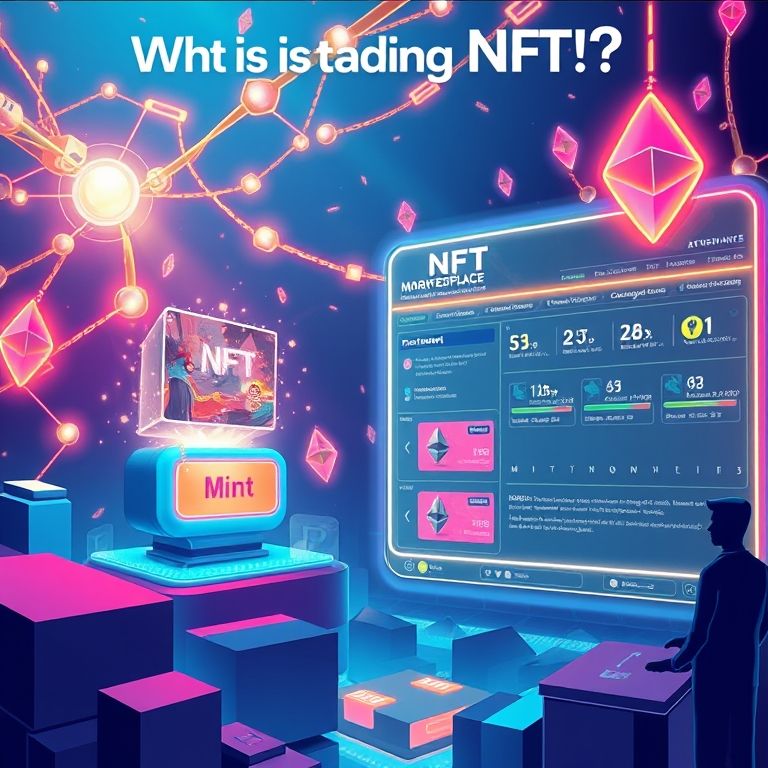what is trading nft
What is Trading NFT
Intro: If you’ve ever wondered how digital collectibles become tradable assets, you’re not alone. NFT trading is about buying, selling, and sometimes borrowing against unique digital items—art, gaming items, music rights, virtual real estate—on networks that certify ownership. The scene moves fast: new drops, evolving marketplaces, and on-chain data that can feel like a map for the next hot trend. But like any financial activity, it comes with risks, costs, and real questions about value, security, and long-term use.

What is NFT trading?
- Definition and flow: NFT trading means exchanging non-fungible tokens on blockchain marketplaces. Each NFT is a verifiable, one-of-a-kind token tied to a digital or physical asset. You bid, buy, or list, and ownership updates on the chain. The process is similar to collecting rare items, but with transparent provenance and programmable features.
- Real-world examples: A limited-edition art drop sells out in minutes; a game item unlocks access in a virtual world; a musician releases a token that carries a rights share or exclusive perks. Traders analyze the asset’s rarity, creator reputation, and on-chain activity to set prices and timing.
Key features and points
- Provenance and uniqueness: The blockchain records every transfer, making it easier to verify authenticity and history. That clarity is a big reason some collectors treat NFTs like provenance-rich assets rather than interchangeable pixels.
- Royalties and programmability: Many NFT contracts embed creator royalties on secondary sales. Traders can participate in ongoing earnings as items circulate, in theory creating a long-tail revenue stream.
- Market dynamics and liquidity: Some NFT markets offer deep liquidity for blue-chip drops; others are thin, with price discovery driven by hype, utility, and community engagement. Costs like gas fees and platform commissions matter, especially for smaller trades.
- Security and wallets: You’re guarding private keys and seed phrases. A compromised wallet can erase your portfolio, so hardware wallets, two-factor authentication, and careful contract vetting matter.
NFT trading versus traditional assets
- Across asset classes (forex, stocks, crypto, indices, options, commodities), NFTs shine in accessibility and novelty but trade-off liquidity and valuation discipline. NFTs can be bought or sold around the clock, often with lower minimums; yet pricing can be highly subjective and concentrated in a few players. Diversification can be achieved via fractional ownership or multiple collections, but you should expect more price swings and less regulatory guardrails than traditional markets.
- Leverage and risk awareness: Some traders use NFT-backed loans or fractional marketplaces to gain exposure without full purchase. Leverage increases risk: price dips, slow liquidity, and margin calls can trigger withdrawals or liquidation. A prudent approach is to keep leverage conservative, use clear exit plans, and avoid putting essential funds at stake.
Reliability, tools, and strategy
- Tools: On-chain analytics, floor price dashboards, and marketplace heatmaps help you gauge momentum. Combine chart-style analysis with on-chain signals, like holder distribution and burn activity, to form a view.
- Security practices: Use reputable platforms, verify smart contracts, and store keys offline when possible. Regularly review transaction history and be wary of impersonation or fake drops.
- Scenario planning: In a world leaning toward DeFi, you’ll see NFT markets tie increasingly to collateralized lending, automated liquidity, and layer-two scaling. Plan for volatility, gas price spikes, and occasional platform downtime.
DeFi, challenges, and future trends
- Decentralized finance grows with more open pools, cross-chain bridges, and smart-contract automation. Yet challenges include security risk from complex contracts, regulatory scrutiny, and liquidity fragmentation across chains.
- The next wave: AI-assisted trading and smart contracts that automate routine tasks like risk checks and rebalancing. Expect smarter on-chain analytics, more transparent risk metrics, and smoother experiences for creating, buying, and selling NFT-backed financial products.
Promotional note and closing thought
What is trading NFT? It’s about owning a story as much as an asset, combining art, utility, and potential value across a growing Web3 financial ecosystem. If you’re exploring, remember: start small, use solid security practices, and let data and discipline guide your moves. Trade smarter, collect with intention, and stay curious—the future of NFT trading is being written on-chain every day. Slogan: Trade what you collect, collect what you trade.
YOU MAY ALSO LIKE




